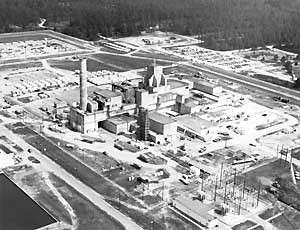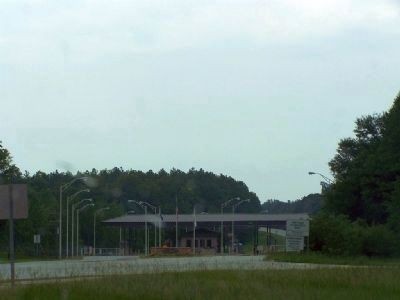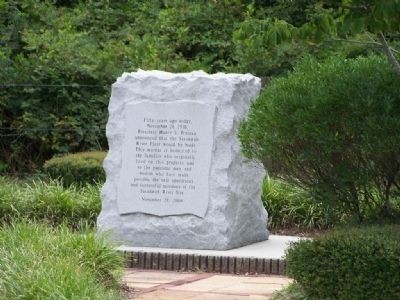Savannah River Site
Introduction
Text-to-speech Audio
Images
L Reactor Facility: L Area, Savannah River Site, September 16, 1982

Savannah River Site Controlled Entry. Access to SRS is restricted to approved personnel only.

Savannah River Site Marker

Backstory and Context
Text-to-speech Audio
During the year of 1950, the government asked DuPont to erect and operate a nuclear site close to the Savannah River in South Carolina. The company had lots of experience in nuclear operations. They built and designed the plutonium production complex at the Hanford site for the Manhattan Project during the second World War. A large amount of farmland, the towns of Allentown and Dumbarton, and a few additional communities including Meyers Mill, Hawthorne, Robbins, and Leigh were purchased under eminent domain, and 310 square miles site became the Savannah River Site. It is currently managed by the U.S. Atomic Energy Commission. In 1951, University of Georgia biologists, conducted by professor Eugene Odom, started ecological studies of local plants and animals, and plant construction commenced.
In 1952, the production of heavy water to aid site reactors began in the Heavy Water Rework Facility. Shortly after, the first production reactor, named "R Reactor," went critical in 1953. P, L, and K Reactors went critical in 1954, in addition to the first irradiated fuel being discharged.
In the year of 1955, C Reactor went critical. At this time, the original plutonium shipment evacuated the site. Then, H Canyon, a chemical separation site, started radioactive operations. Permanent tritium facilities began operating and the first shipment of tritium to the Atomic Energy Commission (AEC) was set in motion. In 1956, construction of the basic plant was finally completed, which is owned by the U.S. Department of Energy.
The marker for the Savannah River Site reads: "Fifty Years ago today, November 28, 1950, President Harry S.Truman announced that the Savannah River Plant would be built. This marker is dedicated to families who originally lived on this property and to the patriotic men and woman who have made possible the safe operations and successful missions of the Savannah River Site."
Plans for the future for the site include a large variety of possibilities, including being a place to research reactors, a reactor park for power generation, along with other possible uses. DOE and its corporate partners are monitored by a mix of local, regional and national regulatory agencies and citizen groups.
